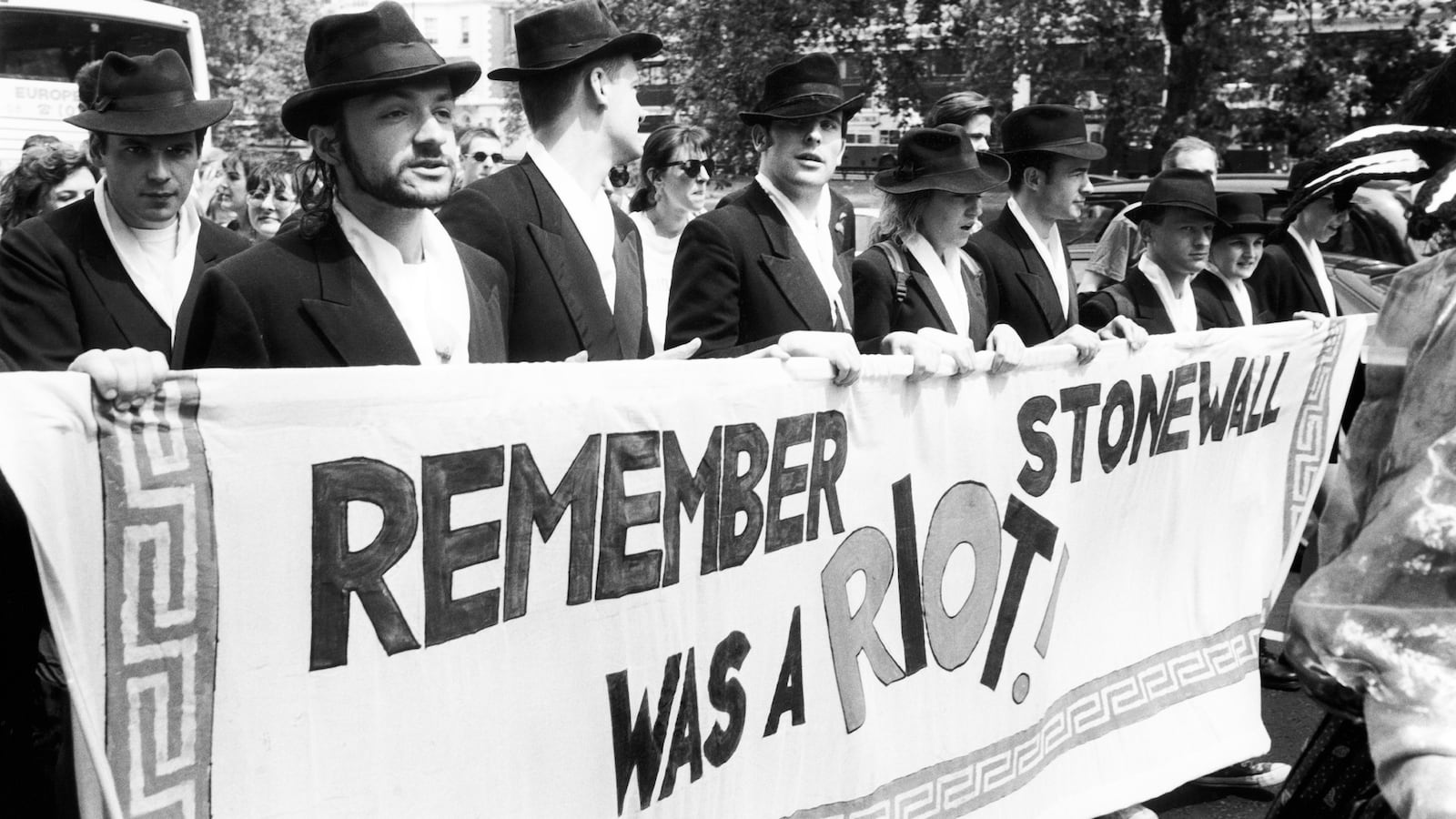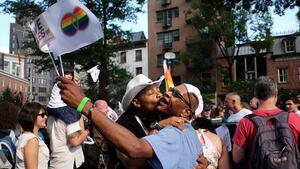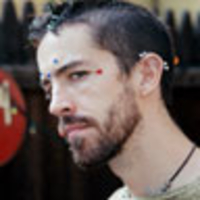On a hot summer night nearly 50 years ago, a gang of New York City police decided to make an example of a gay club in Greenwich Village. An election was approaching, and the police had been cracking down on queer people all around the city in the lead-up to it.
After hauling the patrons out into the street, the police trashed the bar. According to a report in Gay Flames (“A Bulletin of the Homofire Movement”), they destroyed “7 telephones, two 15-foot bars, a dozen couches, electric consoles, wiring, strobe lights, speakers and amplifiers… [and] about 3,000 smashed phonograph records”—a total of some $20,000 in damages.
This was fairly routine—cops have been busting bars that serve queer men in New York City since at least the early 1900s—but that night, something was different.
The patrons fought back, and soon, people all over the Village joined in. Clashes went on for hours (some say days), and before the evening was over, a jewelry shop and a record store had been smashed and looted, two cars had been overturned, a score of public trash cans were set on fire, multiple people were clubbed by the cops, and at least 10 were arrested.
No, I’m not talking about what happened at the Stonewall Inn that infamous day in June, 1969. This was a 1970 raid on The Haven, an alcohol-free gay after-hours club located at 1 Sheridan Square. Although the Stonewall Riot is often thought of as a singular event, unlike anything else in queer American history, it was but the first of a series of clashes between cops and queers in the late 1960s and early 1970s—at least, the first in New York.
In San Francisco, the police had experienced similar queer resistance when they tried to hassle trans women hanging out at the Compton Cafeteria in 1966, sparking nights of queer resistance.
Since the end of World War II, police harassment of the queer community in America had been steadily escalating, and as American politics turned radical in the late 1960s, the queer community began to resist in more visible, vocal, and confrontational ways.
This was a period of incredible militancy and direct action by marginalized communities around the country, including queer people, black power activists, women’s liberationists, and others.
In Los Angeles in 1959, LGBT customers fought back against police harassment at a popular branch of Cooper Do-Nuts. In 1961, a group of homophobic servicemen decided to—foolishly—target the patrons of the Black Nite bar in Milwaukee, who fought back. In 1967, there were demonstrations after a violent police raid of the LGBT Black Cat Tavern in Silver Lake, Los Angeles.
Looking at other anti-police queer-led protests shows us that Stonewall was not a unique historical outlier, but the inevitable product of the clash between post-World-War-II homo/transphobia, and the growing strength of the newly empowered queer community.
While direct actions like Stonewall obviously helped change the course of queer life in America, they did so in conjunction with other, more conciliatory forms of queer resistance.
In 1965, activists from the Mattachine Society opposed the New York State Liquor Authority’s policy of shuttering any bar that served out homosexuals; shortly thereafter, the New York State Commission on Human Rights would publicly agree with their stance, cutting the legal legs out from under the police who raided queer establishments.
By 1967, gay activists had convinced Mayor John Lindsay to also oppose the routine police entrapment of queer men in New York City. The erosion of these institutional homophobic policies set the stage for the expansion of out queer community in the mid-1970s, but it took the masses of queer people fighting back in the streets to give real teeth to this decriminalization of homosexual life.
Between 1969 and 1972, Greenwich Village was rocked by a series of queer counter rebellions, protest marches, and building take-overs—many of them inspired by, on behalf of, or in conjunction with, other marginalized communities.
By looking what happened at The Haven in August of 1970 it’s possible to see just how much these various liberation movements overlapped and influenced one another.
According to Steven F. Dansky’s Hot August Night/1970: The Forgotten LGBT Riot, before the police ever arrived at the club that evening, queer people and feminists of all kinds had already gathered in Times Square, to participate in a rally against police violence.
Planning for the action began when two Latinx attendees came to a Gay Liberation Front (GLF) meeting in July to let the largely white, downtown crowd know about the escalating violence against queer and gender non-conforming people in Times Square (primarily, but not exclusively, people of color).
A whole host of organizations would participate in the rally itself, including GLF, the Gay Activists Alliance, the 'Radicalesbians,' and a coalition of women’s liberation groups.
From the beginning, the marchers were prepared for police harassment; along with chants of “gay, gay power to the gay, gay people,” they called out “male chauvinists you better start shakin’—today’s pig is tomorrow’s bacon,” according to an article written by participant Martha Shelley.
After marching around Times Square several times, the protesters spontaneously decided to march down to Christopher Street—“the symbolic birthplace of our movement,” as Kenneth Pitchford described it in an article he later wrote for Double-F, “a magazine of Effeminism.”
Along the way, the marchers were attacked by straight onlookers, who threw bottles and trash from the safety of apartments high above their heads. Not only did the police fail to intervene, according to Shelley, they also refused to bring two wounded marchers to the hospital, leaving community members to bring them by taxi instead.
Thus, the crowd was already on edge by the time they crossed 14th Street; as Pitchford recalled, “If we thought our rage had peaked before, now we felt something new; the hard tightening of something final in our guts.”
When they reached the Women’s House of Detention—the 11-story women’s prison that was once located at the intersection of 6th and Greenwich Aves— they found themselves joined by a large number of “street people,” in Pitchford’s words.
The area around the House of Detention had a reputation as a meeting point for the families and friends of those on the inside (particularly queer women), dating back at least to the 1930s.
Jay Toole, a community organizer who was imprisoned at the House of D multiple times over the course of the 1960s, remembered the prison was occasionally referred to as “the playground” by butches. The corner of 8th Street and 6th Avenue, Toole told me, was “where we met our girls” as they went to or left the House of D.
Most likely, these were the “street people” that joined the protest outside the prison that night. Estimates put the size of the crowd at anywhere from 250 to 2,000 people.
Joan Nestle, the founder of the Lesbian Herstory Archives, called the House of Detention “a warning, a beacon, a reminder and a moment of community,” which was omnipresent in lesbian life in the 1960s.
In the immediate aftermath of the Stonewall Riots, the newly formed Gay Liberation Front helped organize a week of 24/7 protests outside the prison. In March of 1970, a number of women’s liberation groups engaged in a tense, and at times violent, standoff with police outside the prison gates (and later that same night, the police, led by the same officer in charge during the Stonewall raid, attacked The Snake Pit, a gay bar in the Village, perhaps in retribution).
However, according to Stonewall veteran Jim Fouratt, most of the official protests directed at the House of D, even by LGBTQ groups, were over the illegal arrest and detainment of Black Panther Party leaders.
Joan Bird had just been released from the prison a month before The Haven riot, in July of 1970, and Angela Davis would be held there for months starting that October (although Davis wouldn’t publicly come out as a lesbian until the late 1990s, in her autobiographyshe described homosexuality as “one of the centers around which life in the House of Detention revolved.”)
This relationship of support was not one way. Just a few months before The Haven raid, the Black Panther Party’s Minister of Defense, Huey P. Newton, had issued a statement calling for the Panthers to “try to form a working coalition with the Gay Liberation and Women's Liberation Groups” (most likely influenced by his friendship with civil rights and gay power activist Kiyoshi Kuromiya).
The BPP had obvious, long-standing, and well-discussed issues with homophobia and misogyny (as did pretty much the entirety of the Left, and the country, at the time), but the positive relationships between 1970s liberationists rarely get the same amount of attention.
The Women’s House of Detention in Greenwich Village was one of the sites where the concerns of nearly every liberation movement—black, Latino, feminist, anti-racist, queer, Third World, Marxist, etc.—connected.
After protesting the prison, the march began to disperse – at which point, activists heard about what was happening at The Haven. Many believed the cops knew that most queer activists would be at the rally in Times Square that night, and had raided The Haven assuming there would be little opposition.
But the cops were wrong.
As Martha Shelley wrote, “Masses of people, marchers and cruisers, crowded up in front of the Haven. A sister whispered to me, ‘There’s going to be trouble.’ Sure enough, the cops started swinging their nightsticks, and people began to run… Word came from behind us that the Women in the House of Detention had begun to riot and burn their mattresses. We took the crowd back to the House of D. Sure enough, flaming objects were descending from the windows.”
(While she wasn’t there the night of The Haven raid, Angela Davis described the experience of being on the inside during a similar protest in her autobiography. Women throughout the building chanted along with the protesters and refused to return to their cells. After 48 hours, the guards beat one imprisoned woman so loudly the rest could hear, and threw her in solitary confinement, to get the rest to behave.)
As the women in the House of D began rioting, the night descended into a pitched street battle. According to Pitchford,
The well-organized police violence began. First massing, then moving out on the double, clubbing in all directions, seizing prey at random, dragging people away. One of our badly beaten street-fighters, a young black brother was carried off unconscious. People knelt down and daubed their hands with his blood and streaked it over their faces like war paint… six cops with clubs surrounded a captive faggot (a white brother, this time) in front of a store window grating and slammed him against it again and again, his head battered, his groin prodded with clubs. His screams pulled us toward him – until a heavy line of club-swinging police reinforcements drove us back…
They said afterward that two cars had been overturned, seven cops hurt (one supposedly knifed, according to the Daily News), 18 of our people arrested, and (hopefully) Inspector Michael Lonergan of the Third Division kneed in the groin… Lesbians and faggots found a new pride and anger in themselves, and stepped out from behind all sorts of brain-damaging euphemisms and began to learn how to fight the vicious genocidal system that oppresses us as much as any other un-Amerikan people in the world.
By dawn, it seemed the protests had subsided, although a few people remember isolated incidents between queer people and cops over the next two days. The weekend papers were filled with accounts of the gay violence in Greenwich Village—as well as stories of three police raids on Black Panther Party offices in Philadelphia, which ended in gun fights, clouds of tear gas, fifteen arrests, and three wounded officers.
Unlike Stonewall, however, The Haven raid and the House of Detention protest were quickly forgotten. A general amnesia about queer militancy—and the connections between various liberation and power movements—set in quickly.
Stonewall would be more likely to be referenced in connection with the death of Judy Garland than in connection with the other uprisings that took place in the early 1970s.
Stonewall obviously inspired much of the courageous activism that came afterwards—including that on the night of The Haven raid—but almost certainly, had Stonewall not occurred, we would have immortalized a different moment of queer resistance.
As we take this time to immortalize Stonewall, we should also remember Mattachine and 'Radicalesbians'; The Black Panther Party and the Women’s House of Detention; The Haven Raid, The Snake Pit Raid, and every other forgotten (or not-yet-remembered) moment of queer resistance.


